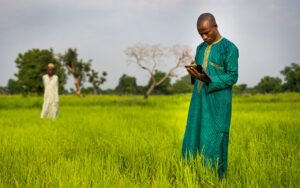Microinsurance is a type of insurance designed to help low-income individuals and families obtain insurance at a low cost. Traditional insurance may be too expensive and difficult for some to understand, but microinsurance is simpler and has lower premiums. Therefore, its main purpose is to protect the financial security of people whose income level prevents them from entering the regular insurance market.
Low-income families are often faced with several risks that can quickly undermine their financial security, such as health problems and property loss. Microinsurance provides an important safety net and ensures that these families get the help they need when hard times strike.
1. Why Microinsurance is Becoming More Important?
The fact that low-income households are becoming increasingly vulnerable to various risks makes microinsurance even more important. Natural disasters, health issues, and unstable economies can severely damage these areas, which can have very negative financial repercussions. For example, a medical disaster can leave an uninsured family in huge debt. Similarly, farmers who earn a living can lose everything if severe weather, such as drought or flooding, strikes. Microinsurance directly addresses these issues by offering customized products with specific coverages to help families understand the financial impact of these risks.
2. Get Affordable Health Insurance for Your Family:
One of the most important types of microinsurance for low-income earners is health insurance. These families cannot afford many standard health insurance plans, leaving them with high medical bills. Micro health insurance fills this gap by offering basic health care at a lower cost. These plans typically cover regular checkups, injections, and hospitalizations, making it easier for families with modest health insurance to get medical care without fear of losing money. This leads to better health outcomes and a higher quality of life.
3. Microinsurance for Farmers:
In many developing countries, agriculture is the primary livelihood for low-income earners. Unfortunately, this sector is highly vulnerable to risks such as natural disasters, pests, and market changes. Agricultural microinsurance covers the specific risks mentioned above and provides farmers with money if their crops fail or their livestock die. This protection is necessary to maintain food security and economic stability in the community. Agricultural microinsurance protects farmers from the financial consequences of unexpected events. This motivates them to invest in better farming practices and helps families to provide for themselves even when conditions are poor.
4. Life Microinsurance:
Micro-life insurance is another important component of microinsurance for low-income families. This type of coverage can provide a safety net for the policyholder’s family if they die prematurely. Losing your breadwinner can have a major impact on the finances of a low-income family, so micro-life insurance is something they should consider. Small life insurance payments can help pay for funeral expenses, outstanding bills, and living expenses of deceased family members. This cash cushion ensures that grieving loved ones do not have to go through difficult times alone, giving them peace of mind during difficult times.
5. Property Microinsurance:
Property, such as a home, a small business, or farm equipment, is often the most valuable asset for a low-income earner. Microproperty insurance can protect these important assets from risks such as fire, theft, and natural disasters. When families lose their homes, their financial situation can be very difficult, and they can end up in debt or poverty. Families can receive compensation for damage or loss through property insurance, helping them get back on their feet more quickly. This protection is important for maintaining stability and building resilience among low-income groups.
6. Simplified the Accessibility Claims Process:
One thing that discourages people from purchasing standard insurance is the complex claims process, which can often involve a lot of paperwork and take a long time. Microinsurance helps solve this problem by streamlining the claims process so that people on low incomes can get coverage. Many microinsurers are using mobile technology to allow policyholders to submit claims directly from their mobile phones. This streamlined approach allows people to get the help they need quickly without getting bogged down in red tape. Claims must be processed quickly and accurately so that families can recover from unexpected events without having to worry about additional costs.
7. Empower Women Through Microinsurance:
Microinsurance is also an important part of women’s empowerment, especially in low-income areas. In many countries, women are responsible for all the money in the family and for childcare. Microinsurance offers women low-cost insurance options to help them take control of their financial security. Microinsurance makes it more likely for women to invest in their families’ health and education, breaking the cycle of poverty. As women gain economic independence, they can also become leaders in their communities, which can help drive social change and promote gender equality.
Conclusion:
Microinsurance is a great way for low-income people to protect themselves from the risks they face every day. Microinsurance is a powerful tool for economic stability because it ensures that everyone has access to basic health care, protects livelihoods through agricultural insurance, and provides people with financial security in the event of the death of a loved one. Through streamlined claims processes and community-based programs, microinsurance is accessible and useful to the people it helps. As microinsurance continues to grow and change, it will become increasingly important to help low-income families and build resilience in vulnerable communities around the world. Microinsurance is a bright spot in a world of uncertainty because it makes security affordable for everyone.
FAQs:
1. What is microinsurance?
Microinsurance is a type of insurance designed to help low-income individuals and families obtain coverage at a price they can afford. It can protect you financially against certain risks, such as health problems, property damage, or crop failure, and is less expensive than regular insurance.
2. Who is microinsurance right for?
Those who cannot afford life insurance or who cannot obtain insurance due to financial circumstances are usually the ones who purchase microinsurance. The goal is to provide these groups with the care they need to protect their health and lifestyle.
3. What types of risks does microinsurance cover?
Microinsurance protects against a variety of risks, such as medical emergencies, loss of life, property damage, and agricultural losses. Coverage options vary from provider to provider and can be tailored to the needs of the communities they serve.
4. How is microinsurance different from general insurance?
Microinsurance differs from regular insurance in that it is cheaper, more accessible, and easier to obtain. Microinsurance policies typically have lower premiums, cover specific risks, and have fewer eligibility requirements. This makes them more accessible to low-income families.
5. How do you calculate microinsurance rates?
The premium for microinsurance is typically calculated based on the type of risk covered, the average income of the insured group, and the amount insured. The goal is to ensure that the company can maintain the program while keeping premiums low.




